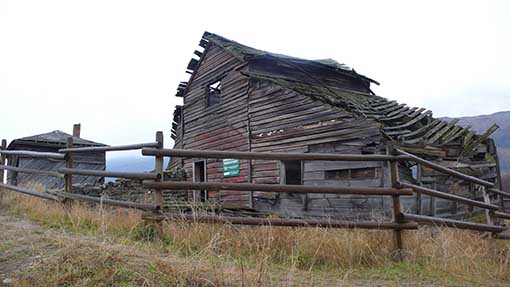Something to keep in mind…

2019 LANCET REPORT ON HEALTH AND CLIMATE
This year’s Lancet Report on Health and Climate Countdown has over 100 contributors from 35 international institutions and tracks 41 climate health risk indicators. It is an international, multidisciplinary collaboration between academic institutions that formed four years ago and releases annual reports.
The following articles discuss the Lancet Report on Health and Climate Countdown.
Climate change will affect “every single stage” of a child’s life, health researchers warn
Vox 11-13-19
The worst effects will fall to the youngest…
As children, this next generation faces growing risks from climate-related hazards like less nutritious crops and spreading diarrheal disease. As these children grow up, they will encounter air pollution exacerbated by burning fossil fuels. When they enter the workforce, they may struggle to earn money as rising average temperatures make it more difficult to work outdoors. And their lives and livelihoods could be disrupted by extreme weather becoming more severe. …
The report also highlights tactics to adapt to unavoidable changes in the climate. These measures include building a global health and climate monitoring system, tracking high climate risk areas in cities, anticipating the spread of disease vectors, and providing plans to cool people off during periods of extreme heat.
New Global Health and Climate Crisis Report Warns of Future ‘Where a Child Has to Fight Simply to Survive’
Common Dreams 11-14-19
“Children are particularly vulnerable to the health risks of a changing climate” because “their bodies and immune systems are still developing, leaving them more susceptible to disease and environmental pollutants.”
The Lancet: Climate change already damaging health of world’s children and threatens lifelong impact
EurekAlert 11-13-19
Throughout adolescence, the impact of air pollution will worsen–with premature deaths from outdoor air pollution (PM2.5) stagnating at 2.9 million worldwide in 2016 (over 440,000 from coal alone); total global energy supply from coal rose 1.7% from 2016 to 2018, reversing a downward trend.
As temperatures rise, harvests will shrink–threatening food security and driving up food prices. When grain prices spiked in 2007-2008, for example, Egypt’s bread prices rose 37%. Over the past 30 years, global yield potential of maize (-4%), winter wheat (-6%), soybean (-3%), and rice (-4%) has fallen. Infants and small children are among the worst affected by malnutrition and related health problems such as stunted growth, weak immune systems, and long-term developmental problems.
Climate change is adversely affecting children’s health worldwide
Inhabitat 11-13-19
Health-related incidents flagged by The Lancet’s report include increased risks of low birth weight and infant mortality for newborns. A warmer world affects food productivity, resulting in food and water shortages, population displacement and conflicts that leave children and youth vulnerable to health risks. Children, adolescents and young adults are likely to experience additional maladies that range from cardiovascular issues, asthma attacks, insect-borne diseases, malnutrition and exposure to extreme heat, weather vagaries and climate-driven catastrophes. If the current greenhouse gas emissions trajectory persists with business as usual, then children will face billions of dollars in healthcare costs.
The purpose of The Lancet‘s Countdown is to bring awareness to the interrelationship between public health and climate change, in hopes that a shift can take place to steer society away from business as usual.
Here is the report referred to above…
Science Policy 11-13-19
The Lancet Countdown is an international, multidisciplinary collaboration, dedicated to monitoring the evolving health profile of climate change, and providing an independent assessment of the delivery of commitments made by governments worldwide under the Paris Agreement. …
The science of climate change describes a range of possible futures, which are largely dependent on the degree of action or inaction in the face of a warming world. The policies implemented will have farreachingeffects in determining these eventualities, with the indicators tracked here monitoring both the present day effects of climate change, as well as the worldwide response. Understanding these decisions as a choice between one of two pathways—one that continues with the business as usual response and one that redirects to a future that remains ‘‘well below 2°C’’—helps to bring the importance of recognising the effects of climate change and the necessary response to the forefront. …
A child born today will experience a world that is more than four degrees warmer than the preindustrial average, with climate change impacting human health from infancy and adolescence to adulthood and old age. Across the world, children are among the worst affected by climate change. Downward trends in global yield potential for all major crops tracked since 1960 threaten food production and food security, with infants often the worst affected by the potentially permanent effects of undernutrition.
This is the Policy Brief for the U.S. …
The Lancet Countdown on Health and Climate Change Policy brief for the United States of America
Square Space 11-13-19
U.S. political leaders are faced with a critical choice: to either sow change now and reap the health benefits, or continue to delay and suffer health harms as a result. According to the Intergovernmental Panel on Climate Change (IPCC), global greenhouse gas (GHG) emissions must be reduced by at least 45% from 2010 levels by 2030 and reach net zero by 2050 to meet the goal of the Paris Agreement to limit warming to 1.5˚ C.
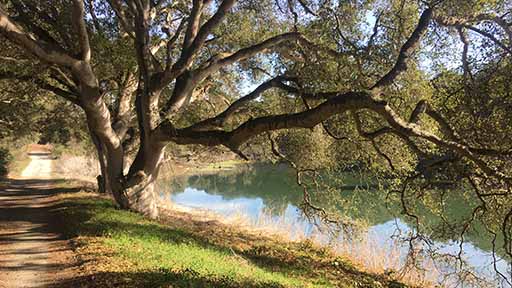
HOT AIR NEWS ROUNDUP
This Week’s Highlights
Grasslands beat forests in taking advantage of warming winters
Granite Geek 11-12-19
“Although we think of winter as the dormant season for plants, it is increasingly clear that winter conditions have an important effect on ecosystems, such as forests and grasslands. While we might think a longer growing season means that forests can take up more carbon, this can be offset if warm winters cause soils to thaw and lose carbon long before tree growth begins.” …
Using environmental sensors mounted high above the forest and grassland, they continuously measure how much carbon dioxide is moving in and out of the ecosystem, which is a metric of biological activity much like the ecosystem’s breath. …
Winter 2015-16 was the warmest ever recorded in New England but was within the range of climate projections for the end of the century. In the grassland, these record-breaking temperatures caused the grasses to start growing in February, well before what is thought of as “winter’s end.” As a result, the grassland plants took up roughly three times more carbon from the atmosphere during the late-winter/early-spring than they would have during a typical year. …
On the other hand, the forest could not benefit from warm winter conditions because growing new leaves takes time, and trees bear greater risks of leafing out too early if colder weather returns. So, instead of becoming a greater carbon sink, the forest lost carbon during the early spring due to elevated decomposing in the unusually warm soils.
Although small carbon losses in spring are not unusual, the extended time period between soil thaw and leaf out in 2016 caused the forest to lose 2.5 times more carbon than normal.
Conversations, opinions are core to curbing climate change
MN Daily 11-19-19
Blumenfeld, senior climatologist at the Minnesota Climatology Office, travels the state to engage with Minnesotans about the science of climate change. “I think society has had this assumption that if you are trying to convince people of something, all you need are facts,”
Blumenfeld said. “It’s much harder than just standing at a lecture and yelling facts to an audience, then hoping that everyone goes home and changes their lightbulb.”…
Scientists and educators at the University of Minnesota are finding ways to connect Minnesotans to the global conversation about climate change. This is part of an effort to explain its local impacts. University Extension, whose mission is to share research knowledge across the state, is trying to make climate change data more relatable. According to a 2019 Yale University study on climate opinion across the United States, 66 percent of adults in Minnesota think global warming is happening. At the same time, 64 percent say they rarely or never discuss it as a topic. …
Term-usage goes a long way in addressing the effects of a warming climate, said University Extension regional educator on soil and water quality Jodi DeJong-Hughes. “I could talk about climate change and if I say that or global warming, it puts [farmers] on the defense — they quit listening,”
Dejong-Hughes said. She said breaking it down in terms of money saved helps many understand why their choices are important. “We show you can [farm] with two thirds of [fertilizer] and still get the same yield, and it saves you money,” she said.
Move Over Mariah, Extinction Rebellion Wants the Number 1 Christmas Song This Year
[VIDEO]
Decarbonizing the power sector
Science Daily 11-19-19
Electricity supply is one of the biggest CO2 emitters globally. To keep global warming well below 2°C, several paths lead to zero emissions in the energy sector, and each has its potential environmental impacts — such as air and water pollution, land-use or water demand. Using a first-time combination of multiple modelling systems, an international team of researchers has now quantified the actual benefits and downsides of three main roads to decarbonization.
After Morales Ousted in Coup, the Lithium Question Looms Large in Bolivia
Common Dreams 11-12-19
It is important to recall that Bolivia has suffered a series of coups, often conducted by the military and the oligarchy on behalf of transnational mining companies. Initially, these were tin firms, but tin is no longer the main target in Bolivia. The main target is its massive deposits of lithium, crucial for the electric car. …
Bolivia’s key reserves are in lithium, which is essential for the electric car. Bolivia claims to have 70 percent of the world’s lithium reserves, mostly in the Salar de Uyuni salt flats. The complexity of the mining and processing has meant that Bolivia has not been able to develop the lithium industry on its own. It requires capital, and it requires expertise. …
The salt flat is about 12,000 feet (3,600 meters) above sea level, and it receives high rainfall. This makes it difficult to use sun-based evaporation. Such simpler solutions are available to Chile’s Atacama Desert and in Argentina’s Hombre Muerto. More technical solutions are needed for Bolivia, which means that more investment is needed. …
Morales made it clear that any development of the lithium had to be done with Bolivia’s Comibol—its national mining company—and Yacimientos de Litio Bolivianos (YLB)—its national lithium company—as equal partners.
Sydney Is Running out of Water as Bushfires Rage
Eco Watch 11-15-19
Sydney — Australia’s largest city and home to nearly 5 million people — is facing a severe water shortage and is grappling with a warning that its dams may run dry by May 2022, as CNN reported. Throughout the Australian winter and now the spring, Sydney and its surrounding areas have been under a water restriction that limits the amount of water people can use to fill pools and it puts a moratorium on leaving a running hose unattended. The New South Wales water authority said that Sydney’s dams are just under 47 percent of their capacity and the number is expected to drop. …
The water shortages have left New South Wales’ residents in a bind as towns outside of Sydney are even closer to day-zero, the day when no water remains. Parts of northern and inland New South Wales, along with southern Queensland, have suffered under a drought since 2016 that has severely depleted rivers and dams.
‘4°C of global warming is optimal’ – even Nobel Prize winners are getting things catastrophically wrong
The Conversation 11-14-19
In his Nobel Prize lecture, Nordhaus described a 4°C increase in global average temperature as “optimal” — that is, the point at which the costs and benefits of mitigating climate change are balanced.
In a subsequent academic paper based on this lecture, he stated that “damages are estimated to be 2 percent of output at a 3°C global warming and 8 percent of output with 6°C warming”.
This is a trivial level of damage, equivalent for the 6°C warming case to a fall in the rate of economic growth over the next century of less than 0.1% per year. Nordhaus’s conclusions are based in part on the simple but wayward assumption that the weak relationship between temperature and GDP within the US today can be used to assume how future global temperature rises will affect the economy.

ADAPTION AND RESILIENCE
Electric cars are changing the cost of driving
QZ 11-8-19
Few have driven a Tesla to the point at which the vehicle really starts to show its age. But Tesloop, a shuttle service in Southern California composed of Teslas, was ticking the odometers of its cars well past 300,000 miles with no signs of slowing.
The company’s fleet of seven vehicles—a mix of Model Xs, Model 3s and a Model S—are now among the highest-mileage Teslas in the world. They zip almost daily between Los Angeles, San Diego, and destinations in between.
Each of Tesloop’s cars are regularly racking up about 17,000 miles per month (roughly eight times the average for corporate fleet mileage).
Many need to fully recharge at least twice each day. These long days have pushed Tesla’s engineering to the limit.
Pragmatism works…
Calm Down Everyone, There’s a Problem to Solve
Inside Climate News 11-7-19
“We Midwesterners are more doers than talkers, and so protesting and talking about something is honestly annoying compared to doing something about it,” she said. …
But this adaptation strategy, which includes improvements to storm sewers, among many other steps, goes hand in hand with a clean energy strategy. The city is buying all-electric buses, and the city-owned utility is taking steps toward getting 100 percent of its electricity from renewables. By reducing emissions from vehicles and electricity production, the city aims to do its part to encourage the transition away from fossil fuels. …
Stutsman was able to convince his constituents by talking about the economic benefits of these projects, rather than putting it in the context of global warming. “We didn’t argue about climate change,” he said. “We talked about Goshen. I showed them the numbers. I showed them what we could do.
As a mayor, you need to make sure you’re giving the argument or allowing everybody to find the argument that allows them to support the initiatives you’re bringing forward. Staying out of the politically charged discussions is very important if you’re going to continue to get projects moving.”
Studio 804 creates smaller houses for a changing market
Tree Hugger 11-18-19
LEED Platinum houses that “are exceptionally air tight, highly insulated and use a highly efficient mechanical system to assure a healthy and comfortable interior environment.
The materials are all chosen to avoid the unnecessary use of resources and do not emit toxins by off gassing. All the appliances and fixtures are Energy Star rated. The windows and doors are high performance. The roofing is a highly reflective metal that reduces heat absorption and is recyclable.”
Boulder holding ‘Game of Extremes’ climate change education event
Daily Camera 11-18-19
Boulder on Wednesday is holding an interactive training dubbed the “Game of Extremes” as a way for residents to learn about changes related to flooding and extreme heat caused by climate change. …
The city is holding the event, created by the Urban Sustainability Directors Network, as a way to learn of the issues in a low-pressure environment. …
It will serve as part of the public engagement effort for the city’s creation of the Climate Mobilization Action Plan meant to address the changing climate through systemic overhauls.
Game of Extremes
Boulder 11-20-19
The training centers on cross-department and multi-stakeholder collaboration to assess hazards, identify vulnerability and risk, and development of a climate resilience actions based on a specific budget.
This training promotes incorporation of climate resilience and equity considerations into day to day activities as well as proactive planning efforts. Join with other community members, city and County staff, and other organizational representatives in exploring both our personal and collective resilience to future change through this fun, engaging and highly informative event.
Fighting climate change by planting trees in the sea
World Bank 6-20-19
In Karakalpakstan, the autonomous republic in current-day Uzbekistan, the Aral Sea has all but disappeared. Where fishing communities once thrived, all that remains is a scarred, desert landscape. …
Through a project called the Climate Adaptation and Mitigation Program for the Aral Sea Basin, the World Bank has been supporting both Tajikistan and Uzbekistan in their climate mitigation and adaptation efforts in the former Aral Sea. …
Up to date some 15,000 people benefited from investments that include the restoration and rehabilitation of degraded land , conservation agriculture and the diversification of crops, including growing salt and , drought, pest and disease-resistant crops for income generation. …
We are also developing an ambitious program in Central Asia for Resilient Landscapes – we call it RESILAND – to make lands less vulnerable and to promote climate-resilient integrated landscape management of drylands and mountain ecosystems.
Can we make steel without CO2 emissions using renewable hydrogen?
Tree Hugger 11-18-19
“The Duisburg-based steel producer has launched a series of tests into the use of hydrogen in a working blast furnace. They are the first tests of their kind and are aimed at reducing significantly the CO2 emissions arising during steelmaking.”
In the classic blast furnace process around 300 kilograms of coke and 200 kilograms of pulverized coal are needed to produce a ton of pig iron. The coal is injected as an additional reducing agent into the bottom of the blast furnace shaft through 28 so-called tuyeres. At the start of the tests today hydrogen was injected through one of these tuyeres into blast furnace 9.
The advantage is that whereas injecting coal produces CO2 emissions, using hydrogen generates water vapor. CO2 savings of up to 20 percent are therefore already possible at this point in the production process.
U.S. Electric Bus Demand Outpaces Production as Cities Add to Their Fleets
Inside Climate News 11-14-19
As cities and states across the country set ambitious mid-century climate change goals for the first time and as prices for lithium-ion batteries plummet, a growing number of transit agencies are stepping up efforts to replace dirtier diesel buses with electric ones. Nearly every state has a transit agency that now owns—or will soon own—at least one electric bus. …
The U.S. numbers are still small compared to the hundreds of thousands of electric buses in China, but they’re growing. There are about 650 e-buses on U.S. roads today, but that’s more than double the 300 that the clean energy research group BloombergNEF counted last year. …
So far, California leads the pack, with more than 200 e-buses in service and several hundred more in backlogged orders. Only five states—Arkansas, New Hampshire, North Dakota, South Dakota and West Virginia—have no transit agencies planning to operate electric buses or hydrogen fuel cell buses, another type of zero-emission vehicles.
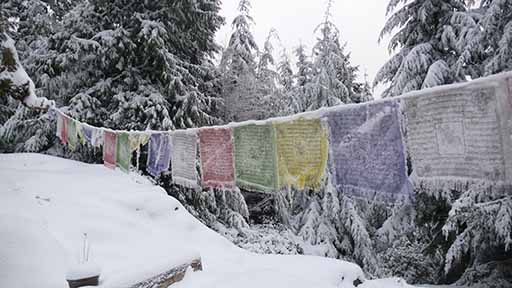
LEGISLATION, ELECTIONS & POLICY
To Solve Multiple Crises at Once, Sanders and Ocasio-Cortez Unveil ‘Green New Deal for Public Housing’
Commons Dreams 11-14-19
Framing the climate crisis as both an existential threat and a “tremendous opportunity” to fundamentally transform American society, Sen. Bernie Sanders and Rep. Alexandria Ocasio-Cortez on Thursday unveiled a Green New Deal for Public Housing that would eliminate carbon emissions from federal housing, invest $180 billion over ten years in retrofitting and repairs, and create nearly 250,000 decent-paying union jobs per year. …
In an interview with the Washington Post Thursday, Ocasio-Cortez said the bill demonstrates that fighting the climate crisis “is not a jobs versus environment paradigm.”
“We need electrical workers. We need construction workers. And it doesn’t have to just be fossil fuel pipelines that create these kinds of jobs,” said the New York Democrat. “We can create millions of jobs in this country by actually rising to the challenge of addressing what this crisis is going to represent.”
Climate Groups Applaud Newsom’s Temporary Fracking Ban in California, But Say Other ‘Critical Next Steps’ Still Needed
Common Dreams 11-19-19
Anti-fracking advocates were cautiously optimistic Tuesday after California Gov. Gavin Newsom announced a moratorium on fracking in the state and new steps to mitigate the disastrous public health effects that extractive industries have on communities. …
Newsom announced that, along with the fracking lease moratorium, the state would also commission an independent audit of regulators tasked with overseeing the oil and gas industries and would have federal scientists conduct third-party reviews of all drilling lease requests going forward. The state will also strengthen protections for communities near oil and gas wells.
“These are necessary steps to strengthen oversight of oil and gas extraction as we phase out our dependence on fossil fuels and focus on clean energy sources,” Newsom said.
The governor’s response to years of anti-fracking campaigning in California shows “that the future of climate leadership means saying ‘no’ to the fossil fuel industry’s dreams of endless expansion,” said Stephen Kretzmann, executive director at Oil Change International.
What critics of Bernie Sanders’ climate plan are missing
Grist 11-15-19
Obviously, experts and pundits can and should criticize a policy proposal on its merits. But what Sanders’ critics miss is that even if it’s impractical or unfeasible, his Green New Deal still serves a political purpose. The plan moves the Overton window, the range of political ideas that the public considers acceptable or mainstream, several notches to the left. In fact, Sanders has already moved the Overton window on climate. In 2016, Sander’s climate strategy centered around a carbon tax, an idea that his rival, Hilary Clinton, couldn’t even get behind.
Here is what the critics of Bernie’s climate plan are really missing…
Bernie’s Climate plan:
• is the most comprehensive in scale & mechanisms
• costs $16 trillion over 15 years
• pays for itself
• promises to take on the fossil fuel billionaires to whom we have been paying $642B/yr in subsidies
• costs $16T over 15 years (a bit over $1T/yr) minus $642B/yr fossil fuel subsidy yields a cost of $450B/yr…
. 350 Action Endorses Three ‘Progressive Climate Champions’ in 2020 House Races Against Establishment Democrats
Common Dreams 11-12-19
Three progressive challengers to establishment House Democrats won endorsements for their 2020 campaigns from climate action group 350 Action on Tuesday. The U.S. political action arm of the international advocacy group 350.org called candidates Jamaal Bowman of New York’s 16th district, Jessica Cisneros of Texas’s 28th district, and Alex Morse of Massachusetts’s 1st district “progressive climate champions, promising the climate leadership required to address the crisis and take us into the climate decade.”
‘We depend on the Tongass’: Alaskans fight to save US’s largest national forest
The Guardian 11-12-19
Tribal leaders, fishermen and environmentalists from Alaska will testify before Congress on Wednesday in an effort to save America’s biggest national forest – the latest battle against the Trump administration’s assault on environmental protections.
The Tongass national forest, one of the world’s last intact temperate rainforests which plays a crucial role in fighting the climate crisis, is under threat of logging as Alaska seeks exemption from the Roadless Rule, which protects millions of acres of pristine forests across the US.
The Tongass is considered the “crown jewel” of the national forest system, sequestering huge amounts of carbon dioxide to keep the greenhouse gas out of the atmosphere.
German parliament approves carbon pricing, air ticket hike
AP 11-15-19
Germany’s parliament has approved a bill to introduce a price for carbon emissions in the transport and heating sectors as part of a broader package of measures designed to tackle climate change. Lawmakers also voted Friday to back a price hike for airline tickets on domestic and European flights.
US announces $30 million to bolster coasts from flooding, rising seas
Reuters 11-19-19
The U.S. government’s oceans and waterways agency will provide $30 million to improve coastal resilience, officials said, aiming to reduce the impacts of worsening storms, flooding and rising seas in nearly half of U.S. states. Grants through the program are designed to restore or expand coastal wetlands, dunes, reefs, mangroves and barrier islands that are key to coastal protection, said the National Oceanic and Atmospheric Administration (NOAA) in an announcement.

THE FIRES
Fueling Concerns of Approaching Catastrophic ‘Tipping Point,’ Deforestation of Brazilian Amazon Hit Highest Level in Decade
Common Dreams 11-18-19
New data out Monday from the Brazilian government showed that Amazon deforestation this year hit its highest level in over a decade, prompting environmental campaigners to warn the rainforest was approaching a possibly catastrophic “tipping point.”
According to the figures from the Brazilian Space Research Institute (INPE), in the 12-month period ending July 30, 2019 deforestation claimed 3,769 square miles (9,762 square kilometers). That amount represents the highest rate of deforestation since 2008 and a nearly 30 percent increase from the previous 12-month period.
Amazon deforestation and number of fires show summer of 2019 not a ‘normal’ year
EurekAlert 11-15-19
The fires that raged across the Brazilian Amazon this summer were not ‘normal’ and large increases in deforestation could explain why, scientists show. The perceived scale of the Amazon blazes received global attention this summer.
However, international concerns raised at the time were countered by the Brazilian Government, which claimed the fire situation in August was ‘normal’ and ‘below the historical average’. An international team of scientists writing in the journal Global Change Biology say the number of active fires in August was actually three times higher than in 2018 and the highest number since 2010.
Although fires in the Amazon can occur in a number of ways, the scientists show that there is strong evidence to link this year’s increases to deforestation.
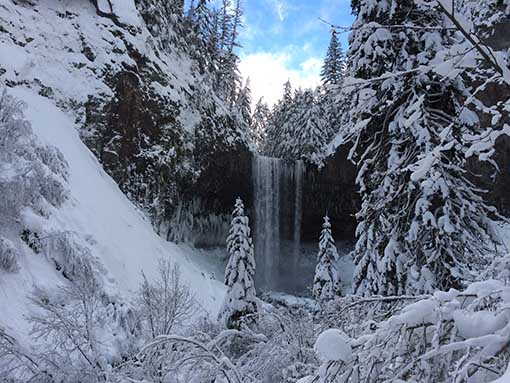
THE ARCTIC
Last Arctic ice refuge is disappearing
AGU 11-11-19
The oldest and thickest Arctic sea ice is disappearing twice as fast as ice in the rest of the Arctic Ocean, according to new research. A new study in AGU’s journal Geophysical Research Letters finds ice in the Arctic Ocean north of Greenland is more mobile than previously thought, as ocean currents and atmospheric winds are likely transporting the old, thick ice found there to other parts of the Arctic.
As a result, ice mass in the area – the last place researchers think will lose its year-round ice cover – is declining twice as fast as ice in the rest of the Arctic, according to the new findings.
Climate models predict Arctic summers will soon be ice-free – perhaps as early as 2030 – meaning less than 1 million square kilometers (386,000 square miles) of summer sea ice will blanket the Arctic Ocean. Arctic warming has already created an environment which leads to younger sea ice.
Reimagining U.S.-China Arctic Ties in the Context of Green Energy
Stratfor 9-4-19
In this blog post, Anita Parlow, Esq., discusses the environmental and geopolitical issues developing in the Arctic region, and how geothermal energy initiatives to combat climate change might help thaw U.S.-China relations. …
This collaborative gathering convened by the self-styled “near Arctic state” was co-sponsored by Iceland’s Arctic Circle. …
More skeptical China watchers, some of whom attended the Shanghai meetings, noted that China’s increased Arctic presence, linked to its environmentally controversial Belt and Road Initiative, is more part of a geo-strategic jockeying for power than concern for the environment. …
Grimsson bluntly pointed out that China’s reliance on coal-fired generator plants contributes to a circularity: release of carbon dioxide emissions from fossil fuels that contribute to Arctic warming, and, in turn, fuels destructive weather patterns worldwide. …
The Senator stated that she would bring the issue of geothermal energy development to Washington to determine congressional interest. Such an initiative would inevitably draw from Iceland’s expertise — and given its success in China — a collaboration could include the world’s two largest producing, consuming, and polluting countries, along with Iceland, which has the capability and the will to transform an energy economy.
Living in Hope and Fear Beside India’s Retreating Himalayan Glaciers
Eco Watch 11-15-19
“Our water source comes from the mountains,” Yudon explains, pointing to a snow-covered peak towering in the background. A remote rainshadow region sheltered from the monsoon by the surrounding Himalayas, the valley receives almost no rain.
Villages like Chichim are instead entirely dependent on the ice melt which trickles down from the glaciers each summer — a supply which is replenished in winter when it snows.
Recent decades, however, have seen a drastic decline in snowfall, with glaciers across the Himalayas losing a total of 8 billion tons of ice every year. “The ice on the mountain is getting smaller and summers are getting longer,”
Yudon frowns, as her mother nods in agreement. “There is less water.”
Going with the floe: Sea ice movements trace dynamics transforming the new Arctic
Science Daily 11-14-19
Scientists have used MODIS satellite imagery to understand long-term ocean movements from sea ice dynamics. The engineers used image-processing algorithms to remove clouds, sharpen details, and separate individual floes. Image analysis algorithms mapped the floe movement over a period of days.
The resulting ocean current maps were about as accurate as maps made using traditional methods. Tracking sea ice will help scientists better understand the sources driving sea ice transport.
FOSSIL FUELS
Methane emissions from coalmines could stoke climate crisis
The Guardian 11-15-19
The methane emissions leaking from the world’s coalmines could be stoking the global climate crisis at the same rate as the shipping and aviation industries combined. Coalmines are belching millions of tonnes of methane into the atmosphere unchecked, because policymakers have overlooked the rising climate threat, according to new research.
The International Energy Agency (IEA) estimated that the amount of methane seeping from new and disused coalmines may have reached just under 40m tonnes last year.
B.C. grants $1.2 billion in deep well subsidies to fracking companies in two years: new report
The Narwhal 11-14-19
Fossil fuel companies drilling for gas in B.C. are benefitting from massive provincial subsidies that allow them to reduce the amount of royalties paid to the province, research by the Canadian Centre for Policy Alternatives has found.
Companies drilling and fracking for natural gas in northeast B.C. were bankrolled by the province to the tune of $703 million last year, a 45 per cent increase over the previous year when companies were handed more than $485 million in credits.
As deep well credits are used to reduce the amount of royalties companies pay to the province when the production process has ended, that means B.C. is increasingly out of pocket even though the amount of gas produced in B.C. has risen more than 70 per cent over the last decade. The total in the deep well credit account now amounts to $2.2 billion.
Highway to hell: the rise and fall of the car
The Guardian 11-18-19
Transforming everything from cities to the climate, the car is perhaps the most important designed object of the 20th century. Our critic travels to the Detroit plant where it all began. …
Earl looms large in the section about making the modern consumer. He is pictured with his “Damsels of Design”, another marketing ruse that emphasised the role of his (small) team of female designers, as a way of appealing to women buyers. As he put it in a 1958 press release: “The skilled feminine hands helping to shape our cars of tomorrow are worthy representatives of American women, who today cast the final vote in the purchase of three out of four automobiles.”
Less loudly trumpeted was the fact that their role was limited to seats and fabrics. The damsels may have been used as a cynical promotional tool, but elsewhere the exhibition will show how cars have been a means of empowerment, with such racing drivers as Kay Petre and Jill Scott Thomas becoming powerful symbols of the suffrage movement.
Subcultures are also explored, in the form of wildly customised lowriders and souped-up muscle cars, while the future of environmentally conscious mobility, and the eventual demise of personal car ownership, will be thrown into sharp relief by attitudes from the 1960s.
A shocking advert for the Humble Oil Company from 1962 proudly boasts: “Each day Humble produces enough energy to melt seven million tons of glacier!”
B.C. should disclose what fracking companies pay for publicly owned resources
The Narwhal 11-13-19
For more than two years, the British Columbia government has vigorously fought efforts to compel the release of information on the hundreds of millions of dollars in subsidies that it doles out to fossil fuel companies each year.
It has either refused outright to release documents or it has handed over pages of essentially worthless information with all the dollar figures and company names blanked out.
Now, thanks to successive appeals to the Office of Freedom of information and Privacy by the B.C. office of the Canadian Centre for Policy Alternatives, the public finally has details on just how extensive those subsidies are.
The list shows for the first time publicly the astonishing scale of the so-called “deep well credit” program and provides insight into how much companies that drill and frack for natural gas in northeast B.C. continue to be bankrolled by the provincial government.
Creating a New Market for Coal in the Push to Mine ‘Critical Minerals’ for National Security
DeSmog 11-15-19
With the backing of the mining industry and anti-regulatory groups, the Trump administration has been seeking to expand mining on public lands and further loosen environmental rules under the banner of weaning the United States off importing minerals deemed “critical” to national security.
This move may have particular implications for the struggling U.S. coal industry and its promoters, which have begun rallying behind efforts to extract some of these so-called “critical minerals” from coal and its by-products. …
“You’ll never make money at it,” said Kevin Ashley, a retired mining engineer and former energy policy advisor. “It’s an academic exercise that allows some people to say, ‘This is why we need to continue mining coal; so we can produce more coal ash.’”
Oil Market Report: Pausing to reflect
IEA 11-12-19
The IEA’s World Energy Outlook 2019 published this week highlights the increasing disparity between the calm oil market of today and heightened geopolitical tensions.
The calmness is supported by a well-supplied market and high inventories. This may continue into 2020 because non-OPEC countries will grow their production by 2.3 mb/d. The US will lead the way but there will also be significant growth from Brazil, Norway and barrels from a new producer, Guyana.
Global refinery activity is expected to rebound sharply in 2020, after a pause in growth this year. While our oil demand growth estimate for 2019 is essentially unchanged at 1 mb/d, the volume of crude oil used by refiners and for direct burn in power generation declined by 300 kb/d through 3Q19. Even after a seasonal surge in refinery runs in 4Q19, crude oil demand for 2019 as a whole is still expected to decline by 90 kb/d, the first drop since 2009.
This reflects the cyclical nature of refining that overproduces in some years and then slows down to clear product stock overhang. …
The hefty supply cushion that is likely to build up during the first half of next year will offer cold comfort to OPEC+ ministers gathering in Vienna at the start of next month. However, a continuously well-supplied market will lend support to a fragile global economy.
WEATHER .
We all need winter…
Protect Our Winters
POW
Snow levels are rising in elevation and winters are shorter. Climate change is already affecting winter. …
Protect Our Winters brought on other concerned pro athletes, individuals, resorts and winter sports companies. …
Protect Our Winters has grown from a kernel of an idea into a worldwide network of over 130,000 supporters – a social movement on climate, designed to activate a passionate community and create the political will for meaningful action by state and federal policymakers. …
Our key formula for engaging 60 million+ outdoor sports enthusiasts globally: relevance and authenticity. Though we can dress up for meetings, in the end we are pro athletes, dirtbags and diehards; for us, winter is not just a passion, but a way of life. now, we have the luxury of worrying about how climate change might impact the outdoor industry.
Right now, we get to help dictate the outcome rather than react to a foregone conclusion. If we sit on our hands for the next two decades, we won’t be worried about powder days, tourism or having fun. We’ll be worried about the stability of our environment, our jobs and our economy.
Act Now: Our House is Flooding | Extinction Rebellion
[VIDEO]
Lots of good weather information…
Fiery Weather Could Plague California Into December; Hints of El Niño Modoki Popping Up
Category 6 11-6-19
“A weather pattern which favors offshore winds occurring over fuel beds that are primed for burning will lead to above to well above normal large fire potential through November. Southern [California] may not see any lowering of large fire potential until late December,” said the Southern California Regional Coordination Center (SCRCC) in a strongly worded outlook issued on Friday and valid through February. The center added: “Offshore winds may lead to periods of critically high fire potential over Southern California the next few weeks.” …
The dry pattern across the Southwest is now acting in concert with unusually warm sea surface temperatures (SSTs) that extend throughout the northeast Pacific. It’s an unwanted reprise of “The Blob,” an expansive zone of warm SSTs in roughly the same area during the mid-2010s. Weather patterns associated with The Blob helped to reinforce California’s brutal six-year drought from 2010 to 2016, and it appears the atmosphere and ocean are now again in sync. …
An El Niño Modoki might not be good news for California, as there’s evidence that the westward-shifted Modoki pattern is less reliably wet for Southern California than a more classical strong El Niño event. This may be one reason why the record-strength 2015-16 El Niño didn’t bring the moisture that SoCal was expecting and longing for.
Global Climate Model Ensemble Approaches for Future Projections of Atmospheric Rivers
AGU 10-12-19
Atmospheric rivers (ARs) are storms of integrated water vapor transport that are important for the global water cycle and also have large impacts on local weather and regional hydrology. An increase in the frequency of ARs is expected to occur by the end of the century throughout most of the globe. …
This work supports the claim that AR frequency will increase in the future by about ~50% (and intensity will increase by ~25%) globally by the end of the century.
Stalled weather patterns will get bigger due to climate change
Science Daily 11-13-19
Climate change will increase the size of stalled high-pressure weather systems called “blocking events” that have already produced some of the 21st century’s deadliest heat waves, according to a Rice University study. Atmospheric blocking events are middle-latitude, high-pressure systems that stay in place for days or even weeks. Depending upon when and where they develop, blocking events can cause droughts or downpours and heat waves or cold spells. Blocking events caused deadly heat waves in France in 2003 and in Russia in 2010.
HEALTH
Interesting podcast. 37 min…
Daniel Schmachtenberger – Utopia or Bust:…
Sticher 8-11-19
This week I’m speaking with Daniel Schmachtenberger. Daniel is a social engineer and evolutionary philosopher and strategist. He is the Founder of Critical Path Institute, The Emergence Project, and Co-Founder of The Neurohacker Collective. You can find his writing at Civilization Emerging.
We talk about the current state of the phase shift, whether we are past the point of no return for social collapse, Daniel’s three generator functions of existential risk, the definition of an adequate social architecture that avoids existential risk, how technology creates asymmetric advantage that debases the planetary life support system, why we need to create technology that leads to ‘metastability’, the pollution of the epistemic commons, why we need to define problems in a comprehensive way where the solutions don’t create worse problems, the vows
Daniel made as a teenager, what progress is being made at solving the generator functions of existential risk, the auto-poetic nature of trauma, and the necessity of a mature relationship between certainty and uncertainty.
Children could face lifelong health threats from climate change
UPI 11-15-19
Children will face more food shortages and infections if climate change continues unchecked, researchers from the World Health Organization and 34 other institutions warn. Climate change is already harming children’s health.
And they’re at risk for lifelong health threats unless the world meets Paris Agreement targets to limit warming to well below 2 degrees Celsius, the scientists reported in the Nov. 14 issue of The Lancet. “This year, the accelerating impacts of climate change have become clearer than ever.”
Animal agriculture worldwide produces an estimated 13-18% of global greenhouse gases. Vegetarianism offers a a huge potential environmental benefit…
This man wants to convince America beef is healthier than meatless burgers
The Guardian 11-15-19
The food industry has a “weapon of mass destruction”. His name is Richard Berman. And he has his sights set on destroying the growing appetite for meatless burgers and plant-based meat substitutes. Berman’s modus operandi is to establish organizations (mostly not-for-profits) which are presented as neutral, independent thinktanks. …
The new campaign criticizes plant-based meats for being “ultra-processed” and not living up to the health halo they benefit from. Berman’s comparisons are not subtle – the “CleanFoodFacts” website compares plant-based burgers to “dog food”.
Book Review…
Climate Confusion, Angst, and Sleeplessness
Dissident Voice 11-12-19
Mark Jaccard, professor of Sustainable Energy at the School of Resource and Environmental Management, Simon Fraser University, Vancouver, British Columbia, offers relief for citizens that feel overwhelmed by the complexities and overarching enormities of global warming. After all, by all appearances, it’s way too big to wrap one’s arms around all by oneself.
But, that does not inhibit Professor Jaccard, who astutely separates myth from reality, a problem that’s found all over creation, making it so much easier to come to grips with one of the most complex existential threats of all time. He not only takes a lot of the mystery out of the climate change imbroglio, but he also tackles the myths that drive, and divide, public discourse, while proffering novel answers for citizens that want to “make a difference.”

WILDLIFE & THE ENVIRONMENT
Negative-Emission Whales
The Breakthrough 10-21-19
According to the analysis, between the carbon in dead whale bodies and the boosted ocean life productivity created by their waste, whales could cumulatively sequester 1.7 billion tons of CO2 every year if their populations returned to pre-whaling levels — roughly 5% of global emissions.
The notion of whales as carbon sinks isn’t radically different from some other, more prominently proposed “natural” solutions to climate change.
Much has been made in recent years, for instance, of negative-emission cows, and the potential to harvest massive production forests for bioenergy with carbon capture and storage (BECCS).
The problem with such so-called natural solutions, however, is that they suffer from significant scientific uncertainties, throwing their carbon mitigation potential into question.
Climate change and overfishing are boosting toxic mercury levels in fish
The Narwhal 11-13-19
We live in an era — the Anthropocene — where humans and societies are reshaping and changing ecosystems. Pollution, human-made climate change and overfishing have all altered marine life and ocean food webs. Increasing ocean temperatures are amplifying the accumulation of neurotoxic contaminants such as organic mercury (methylmercury) in some marine life.
This especially affects top predators including marine mammals such as fish-eating killer whales that strongly rely on large fish as seafood for energy.
Now the combination of mercury pollution, climate change and overfishing are conspiring together to further contaminate marine life and food webs.
This has obvious implications for ecosystems and the ocean, but also for public health. The risk of consuming mercury-contaminated fish and seafood is growing with climate change.
Climate-resilient fisheries require fairness and equity
EDF 11-15-19
The squid war [in Chili] is a testament to the challenges of equity and fairness that fishers and fishery managers are beginning to (and increasingly, must) grapple with the world over as climate change causes fishery ranges to shift and harvests to change. In fact, climate change-driven “fish wars” are already happening in other places too, and as the effects of climate change progress, we can expect them to happen more and more.
These conflicts point to a critical lesson for our efforts to build climate resilience in global fisheries: if fishing communities and nations are going to be able to transform and adapt to changing conditions, decisions and interventions must be guided by the principles of equity and fairness. If they are not, progress will be hindered and outcomes will be worse.
Tropical forest damage is bad enough. New thinking suggests it could prove far more ruinous in terms of the climate crisis…
Forest damage costs far more than thought
Climate News Network 11-19-19
We know already that human activities are causing devastating forest damage. Now a new study shows the loss we face could be much worse than we think. Here, it says, is how to multiply your country’s contribution to solving the carbon problem sixfold.
It’s simple. Do not do anything to your intact tropical forest. Don’t put roads around it, hunt in it, or select prize lumps of timber from it; don’t quarry, mine or plant oil palms in it. Just protect it.
Researchers have calculated that – compared with clearing it – the benefits of benign neglect are 626% higher than all previous accounting. And that’s just the calculation for the first 13 years of this century. Instead of an estimated 340 million tonnes of carbon spilled into the atmosphere, the figure from clearing forests now becomes 2.12 billion tonnes.
Trees that survived the California drought could contain the key to climate resilience
The Hill 11-13-19
California’s five-year drought killed 129 million trees across the state’s forests. Their lifeless trunks are mostly still standing, but among their browning leaves and needles are survivors — trees that withstood the historically hot, dry years that climate change is expected to make more frequent and more intense in coming decades. …
Perhaps unsurprisingly, the surviving trees turned out to be more efficient in their use of water than their neighbors that kicked the bucket. …
In a greenhouse in Lake Tahoe, Calif., Maloney is raising 10,000 sugar pine seedlings, each descended from one of 100 hardy trees that withstood the drought. The saplings will be planted around the Lake Tahoe area over the course of the next year in hopes of making the area’s forests more resilient to the increasing stresses of drought and heat.
Iconic Washington state birds threatened by climate change
lNews Tribune 11-16-19
The National Audubon Society released a comprehensive study in October that shows two-thirds of the species of North American birds are endangered by projected levels of climate change. This report, “Survival by Degrees: 389 Bird Species on the Brink,” documents how birds would be devastated by a projected 3 degrees Celsius (5.4 degrees Fahrenheit) increase in temperature. …
Iconic Washington species such as the Rufous Hummingbird, which dazzles us in the spring with its brilliant colors, the White-crowned Sparrow, which fills our suburban neighborhoods with song every spring and summer, and the Swainson’s Thrush, which lifts our hearts in the woods with its ethereal songs, would be devastated by a 3 degree temperature rise.
Not only would the hummingbird’s breeding habitat be affected (losing 71 percent of its current range), but the species times its migration to coincide with flowering plants in our lowlands in early spring migration and in our mountains during fall migration.
Another article about the resilient Sugar Pine…
In the Sierra, scientists bet on ‘survivor’ trees to withstand drought and climate change
LA Times 11-18-19
Maloney is now leading an effort to plant thousands of seedlings descended from drought-surviving sugar pines from around Lake Tahoe, hoping they carry genes that make them more resilient to drought, waning snowpack and other impacts of global warming.
It’s part of a growing recognition by scientists and land managers that the planet is warming so rapidly they can no longer just restore ecosystems to their previous state, but must step in and accelerate how plants and animals adapt.
Nearly all America’s endangered species will struggle to adapt to climate crisis
The Guardian 11-19-19
Of the 459 animal species listed as endangered by the US government, researchers found that all but one, or 99.8%, have characteristics that will make it difficult for them to adapt to rising temperatures.
An array of threats faces these species. The California condor, once close to being completely wiped out, faces increased risk of contamination in hotter conditions. Key deer, found only in the Florida Keys, face losing habitat to the rising seas.
Whole classes of animals including amphibians, mollusks and arthropods are sensitive to the greatest number of climate-related threats, such as changes in water quality, shifting seasons and harmful invasive species that move in as temperatures climb.
Impact of climate change on Arctic terns
Science Daily 11-18-19
Data collected from electronic tags retrieved from 47 journeys made by the Farne Island Arctic terns, has revealed for the first time how climate change might affect their behaviour. Arctic terns spend their breeding and non-breeding seasons in polar environments at opposite ends of the world and are our longest-migrating seabird.
Spending their non-breeding season in the Antarctic, the remoteness of this part of the world means that until now we have had a very limited understanding of their behaviour and distribution while they are there.

PROTESTS • EXTINCTION REBELLION • RESISTANCE
Fridays for Future
Demanding Seat at the Table, Youth Organizers Announce New Wave of Climate Strikes Ahead of UN Talks in Chile [Madrid]
Common Dreams 10-29-19
The next series of strikes will be held on Nov. 29—the day after Thanksgiving, known as Black Friday—and Dec. 6. The goal of the actions is to influence those attending the 2019 United Nations Climate Change Conference (COP 25) from Dec. 2 to Dec. 13.
“To protect our future,” Anderson said, “we need the U.S. and youth to have a seat at the international table to ensure the climate crisis is addressed through ambitious solutions.” Along with Anderson’s group, others members of the Youth Climate Strike Coalition are Earth Guardians, Earth Uprising, Fridays for Future USA, Future Coalition, the Indigenous Youth Council, Sunrise Movement, U.S. Youth Climate Strike, and Zero Hour.
Greta Thunberg
Greta Thunberg Sets Sail Back to Europe
EcoWatch 11-13-19
Thunberg left the U.S. from Hampton, Virginia Wednesday morning with an Australian family, whose YouTube channel Sailing La Vagabonde chronicles their life aboard a 48-foot catamaran, according to CNN. “So happy to say that I’ll hopefully make it to COP25 in Madrid,” Thunberg wrote on Instagram. “I’ve been offered a ride from Virginia on the 48ft catamaran La Vagabonde.”
Greta Thunberg sparks surge in sailboat hitchhiking
The Guardian 11-15-19
Maritime hitchhiking has hitherto been reserved for sailors looking for experience on different routes and vessels. But after Thunberg’s transatlantic adventures, numbers have boomed. Daniel Krause, a full-time “cruiser”, helps to run the Sailboat Hitchhikers and Crew Connection Facebook group, which has sharply increased to nearly 21,000 members since Thunberg’s voyage. “In the past couple of weeks it has skyrocketed,” he said.
Extinction Rebellion
JOIN XR USA: on their website
XR NEWSLETTERS & EVENTS: on their website
XR USA: on YOUTUBE
NEW XR TRUTH TELLER SITE: on TRUTH TELLER.LIFE
“Calling all concerned Citizens: Tell the world what you know”
Humanity has the know-how to avert catastrophic climate and ecological breakdown. Yet we’re failing to heed the scientific warnings and put them in place. Why aren’t we adopting emergency measures the world over? And what are the near-term consequences of inaction? Do you know something that would help reveal what’s really going on?
Every Single Being on the Planet | Extinction Rebellion
[VIDEO]
Extinction Rebellion climate group seeps into oil-rich Middle East
Reuters 11-11-19
Off-shoots of the group [Extinction Rebellion] that advocates peaceful protest as a way to pile on pressure to curb global warming are sprouting from Beirut to Doha, as activists in the oil-rich region want governments to ditch fossil fuels for renewable energy sources.
“Governments are not going to do anything unless they see that people themselves want that change – that’s how any movement starts,” said Iman, a member of the newly formed Extinction Rebellion (XR) group in Qatar who declined to give her full name for security reasons.
“There’s a very large number of Qataris who are very passionate about sustainability and who want to see change implemented but they also acknowledge the challenges to it – whether that be political or simply cultural,” she said. “BlackRock are the world’s top investor in deforestation and coal, and one of the biggest investors in other fossil fuels,”
Extinction Rebellion targets BlackRock, keeping up the pressure
Al Jezeera 11-15-19
Climate activists with Extinction Rebellion have targeted BlackRock, the world’s biggest asset manager, by dumping ashes at its London office. The action was part of a campaign designed to draw yet more attention to what activists – in the United Kingdom and elsewhere – says is destruction that Blackrock unleashes in the Amazon basin through its investments.
Extinction Rebellion: Granddad risking jail for grandson’s future
BBC 11-13-19
Hugh Thomas, a 63-year-old grandfather, has pledged to do “whatever it takes”, including going to jail, in order to secure a better future for his four-year-old grandson. He lives in Barry and for the last year has been an active member of the campaign movement Extinction Rebellion. …
Semi-retired Hugh is what’s known as an “arrestable”, and in the last year he has been arrested four times. He said: “It is a serious business, and I’ve never been in trouble with the police before. …
Hugh’s grandson has become his “driving force” to be part of the movement.
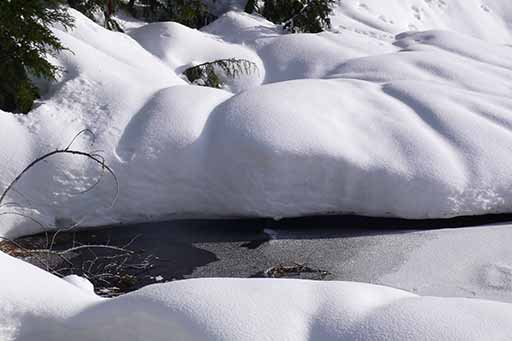
CLIMATE STUDIES
The global distribution of freshwater plants is controlled by catchment characteristics
EurekAlert 11-15-19
Globally, photosynthetic modes of terrestrial plants are influenced by climatic factors such as adaptations to variation in air temperature and water availability.
In water, CO2 often limits photosynthesis because it moves 10,000-times slower than in air and, thus, rapid photosynthesis can deplete CO2 in dense plant stands.
In order to meet the requirements of water plants, CO2 concentrations must be 10-20 times higher than in air.
This never happens in lakes, where microscopic algae may reduce the CO2 content to 10% of that in air. The solution among many water plants is to use bicarbonate, which is dissolved in high concentrations in lakes located in calcareous catchments. ‘
“Use of bicarbonate is energy demanding and much less efficient than CO2 use, when concentrations are the same”, explains Professor Ole Pedersen. “However, in bicarbonate-rich lakes, the photosynthesis yield is much higher when water plants can use bicarbonate.
Globally, this can account for the increasing abundance of bicarbonate users relative to non-users in lakes located in calcareous catchments.”
Climate change could double greenhouse gas emissions from freshwater lakes
PHYS ORG 11-19-19
Every drop of fresh water contains thousands of different organic molecules that have previously gone unnoticed. By measuring the diversity of these molecules and how they interact with the environment around them, research has revealed an invisible world that affects the functioning of freshwater ecosystems and can contribute to greenhouse gas emissions.
Small shallow lakes dominate the world’s freshwater area, and the sediments within them already produce at least one-quarter of all carbon-dioxide, and more than two-thirds of all methane released from lakes into our atmosphere.
The new research, published in the journal PNAS, suggests that climate change may cause the levels of greenhouse gases emitted by freshwater northern lakes to increase by between 1.5 and 2.7 times.
For some urban areas, a warming climate is only half the threat
EurekAlert 11-14-19
A new study from the Yale School of Forestry & Environmental Studies (F&ES) projects that the growth of urban areas in the coming decades will trigger “extra” warming due to a phenomenon known as the urban heat island effect (UHI).
According to their findings, urban expansion will cause the average summer temperature in these areas to increase about 0.5 to 0.6 degrees C — but up to 3 degrees C in some locations. This warming, they show, will increase extreme heat risks for about half of the world’s future urban population — particularly in tropical regions in the Southern Hemisphere, where climate models already project stronger warming due to greenhouse gas emissions and where there is less capacity for adaptation.
In these vulnerable regions, the authors argue, policies that restrict or redistribute urban expansion and planning strategies that mitigate UHIs are needed to reduce the effects on human health, energy systems, ecosystems, and urban infrastructure.
Bulk defective vanadium oxide catalysts remove NOx at lower temperatures
Green Car Congress 11-17-19
Scientists from Tokyo Metropolitan University have developed a low-temperature catalyst for removing NOx gas from industrial exhaust using ammonia. Composed of bulk “defective” vanadium oxide instead of vanadium oxides supported on titanium oxide as in commercial catalysts, the catalyst works at lower temperatures (less than 150 ˚C) with much higher efficiency.
350 PPM Pathways for The United States
Evolved Energy 8-14-19
Evolved Energy Research today released 350 ppm Pathways for the United States, its report on decarbonizing the U.S. economy consistent with returning the world’s global atmospheric concentration of carbon dioxide to 350 ppm by 2100.
This report represents a first-of-its-kind attempt to demonstrate the technical approaches that would be necessary to achieve the cumulative emissions targets suggested by science as necessary to avoid the worst impacts of climate change.
We conclude that:
• It is technically possible to transition the U.S. off of fossil fuels at a pace consistent with 350 ppm trajectories.
• Placing the U.S. energy system on a pathway to 350 ppm is affordable and would increase the total cost of the energy system in the U.S. by only 2-3% of GDP
• Delay is exceedingly costly as a strategy when examining cumulative emissions targets. Under conservative land use assumptions, we’ll be out of our mid-century emissions budget by 2030.
• There are multiple scenarios that achieve this scale and pace of reductions. Examples include relying on no new nuclear, or limited biomass, or no net negative technologies.
Even if one of these potential strategies is removed, the necessary emissions reductions can still be achieved. …
This represents the first public report that demonstrates the use of the RIO (Regional Investment and Operations) model which fully optimizes the supply-side of decarbonized energy systems including investments in renewables, thermal generation, electricity storage, biofuels, electric fuels (electrolysis and power-to-x), and direct air capture.
Here is the report referred to in the above article
350 PPM Pathways for The United States
WS 5-8-19
This report describes the changes in the U.S. energy system required to reduce carbon dioxide (CO2) emissions to a level consistent with returning atmospheric concentrations to 350 parts per million (350 ppm) in 2100, achieving net negative CO2 emissions by mid-century, and limiting end-of-century global warming to 1°C above pre-industrial levels.
The main finding is that 350 ppm pathways that meet all current and forecast U.S. energy needs are technically feasible using existing technology, and that multiple alternative pathways can meet these objectives in the case of limits on some key decarbonization strategies.
These pathways are economically viable, with a net increase in the cost of supplying and using energy equivalent to about 2% of GDP, up to a maximum of 3% of GDP, relative to the cost of a business-as-usual baseline.
These figures are for energy costs only and do not count the economic benefits of avoided climate change and other energy-related environmental and public health impacts, which have been described elsewhere.
Global Warnings
Paul Beckwith: “I declare a global climate change emergency to claw back up the rock face to attempt to regain system stability, or face an untenable calamity of biblical proportions.”
Kevin Hester: “There is no past analogue for the rapidity of what we are baring witness to. There has been a flood of articles … 2C is no longer attainable and that we are heading for dangerous climate change”
Magi Amma: We need to turn on a dime at mach nine!
…
Equivalencies:
• 1 gigatonne = 1 billion tons
• 1 gigatonne Carbon = 3.67 gigatonnes CO2
• 1 part per million (ppm) of atmospheric CO2 = 7.81 gigatonnes CO2
• 1 part per million of atmospheric carbon = 2.13 gigatonnes of carbon

